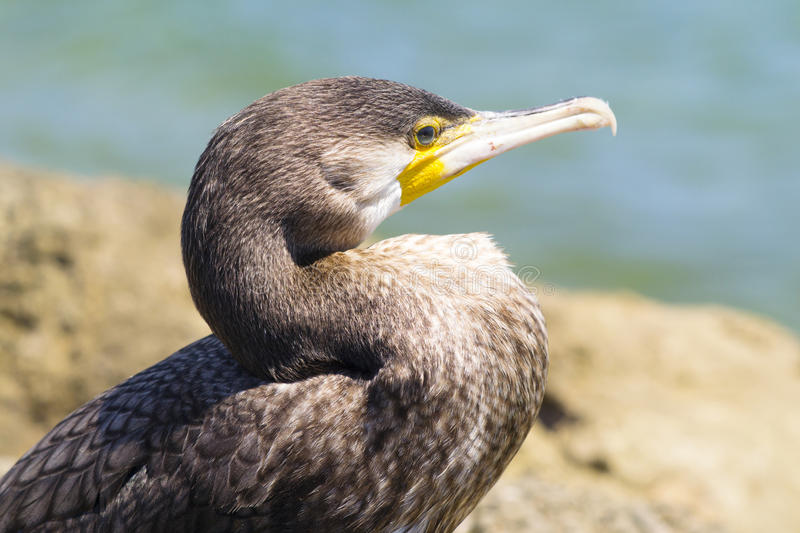
Went swimming today and with help saved a bird caught in a net.
I am not a great fan of set fishing nets, and especially not those set up close to shore. They are not big, about thirty metres in diameter, with a small buoy and red flag. An off-the-rocks rod-fisherman recounted to me once how a swimmer drowned getting caught in a net like these. No danger sign under the waterline of course.
So down for my morning swim and starting as usual from some rocks, a groyne, a small set of boulders off Cannes, the first of several going towards Cannes La Bocca, where I usually swim.
Looking out about fifty metres I saw fishermen had placed one of these nets. Something was flapping. Birds were flying above in a circle so I wondered if they knew and were waiting for the flapping thing to die. When the caught thing flapped a wing vertically, I saw it was a bird. A small bird at first glance, its head down in the sea. When it brought its head up, it was not moving this way or that. I knew it was stuck.
When I swim, I go across towards another set of rocks and coming back and that’s me done for the day. Today first up I decided I was going to swim closer to shore, but I couldn’t just leave the stricken bird in that state.
So I swam out to get a closer look and being careful not to get too close to the practically-speaking transparent closely-woven plastic netting I saw the bird was not small. It was a Cormorant and it started flapping more, the closer I got.
It was completely entangled from its beak all the way down its body. I could see there was nothing I could do treading water trying to disentangle it. With the water temperature colder this month it wouldn’t be long before I got cold, leading me to do something silly like get myself well pecked. I felt sure this bird, terrified as it was, would soon use its powerful beak on me.
I swam to shore. There is a cafe/bar on the sands and telling a guy working there what I had discovered, I asked if I could borrow some scissors. He went and got a pair. Swimming out another swimmer was in the bay so I enlisted his help and we swam to the stricken bird.
First up I got my toes caught up and then the scissors entangled. So it wasn’t a great start.
The other guy used the scissors, being better than me, so while I held some of the lines, eventually we got the bird free from the netting circle. The bird was still not free from the netting. It was still well and truly entangled. So we swam it towards shore keeping the process of disentangling going on while we avoided beak attacks.
Moving on to the beach, me holding the bird up, he cut. Two women approached and showing more nous than either of us could think of or muster, first got control of the bird by gently grabbing its neck. Then the other other held onto its body. I thought to myself: women are more practical.
Finally we got the netting off and the bird now free quickly flew into the sea without so much as a backward glance. I handed back the scissors and went on my swimming way. It didn’t last long. I was now quite cold. So I cut it short. I could have gone on, but I didn’t want to get cramped up, or ‘contract’ pre-hypothermia. I am probably overstating here but it made me realize that if you were unlucky to fall into the sea and those seas were cold, if you didn’t keep moving, you soon would have hypothermia.
So returning home and going online to read on sea bird rescues they warned: protect your eyes. A cormorant’s beak is hooked at the end so it can do a lot of damage. I had racing goggles on but they were up on my forehead. I hadn’t thought of what a terrified bird might do to your eyes.
Still, this is an all’s well that ended well story. I’m glad I didn’t swim on by. I have often watched Cormorants from those rocks swimming at breakneck speed underwater chasing fish, coming up to stare warily at me staring at them. I hope if he or she comes back that he/she will waggle her/his neck or something in recognition of the moment we shared.